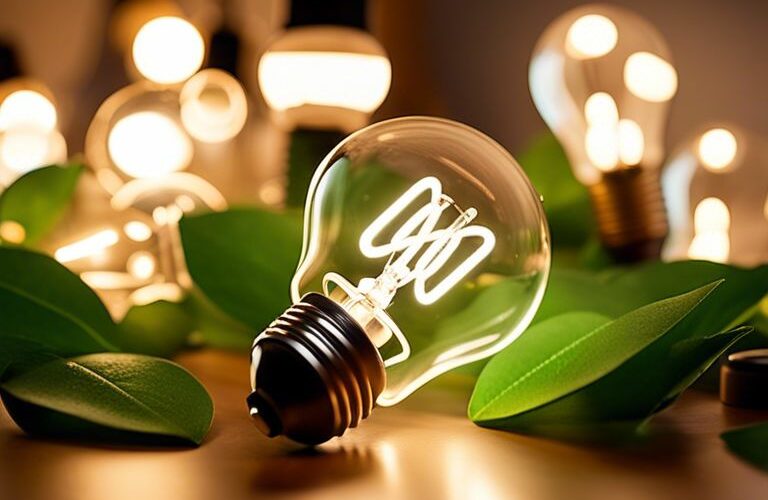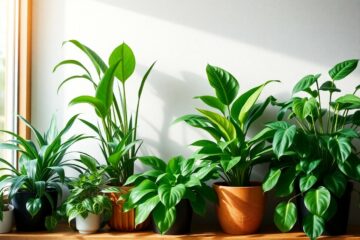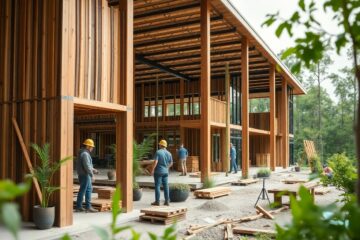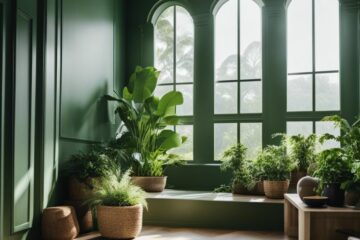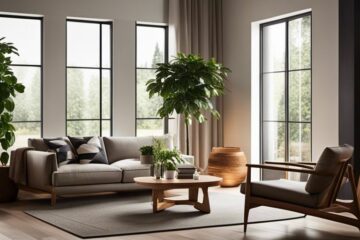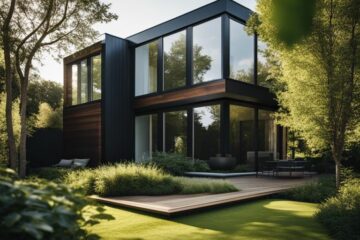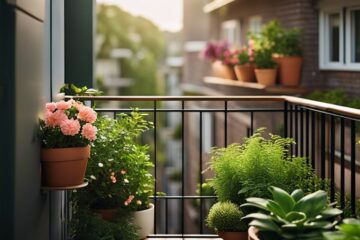There’s no denying the impact of energy-efficient lighting on both our environment and our wallets. Making the switch to eco-friendly bulbs is a simple yet effective way to reduce energy consumption and lower electricity bills. In this comprehensive guide, we will explore the various types of eco-friendly bulbs available, their benefits, and how to choose the right ones for your home. By the end of this article, you’ll be equipped with the knowledge to make informed decisions that not only benefit the planet but also enhance your living space.
Table of Contents
Understanding Eco-Friendly Bulbs
Before delving into the world of eco-friendly bulbs, it’s essential to understand the different types available and their respective pros and cons. Making an informed decision will not only benefit the environment but also help you save on energy costs in the long run.
Types of Eco-Friendly Bulbs
There are three main types of eco-friendly bulbs commonly used in households: LED (Light Emitting Diode), CFL (Compact Fluorescent Lamp), and Halogen Incandescent. Each type has unique characteristics and advantages that cater to different lighting needs.
- LED (Light Emitting Diode)
- CFL (Compact Fluorescent Lamp)
- Halogen Incandescent
Assume that choosing the right type of bulb depends on factors like brightness, color temperature, energy efficiency, and lifespan.
Pros and Cons of Each Type
To efficiently choose the best eco-friendly bulb for your home, it’s crucial to weigh the pros and cons of each type. This will ensure that you select the most suitable option based on your specific lighting requirements.
| LED | CFL |
| – Energy efficient | – Lower initial cost |
| – Long lifespan | – Brighter light output |
| – Instant light | – Wide range of sizes and shapes |
| – Environmentally friendly (no mercury) | – Energy efficient |
EcoFriendly Pros and Cons of Each Type:
To maximize the benefits of using eco-friendly bulbs, consider the environmental impact, energy efficiency, and overall cost of each type. LED bulbs are known for their energy efficiency and long lifespan, making them a popular choice for eco-conscious consumers. On the other hand, CFL bulbs provide bright light output at a lower initial cost, but they contain mercury which can be harmful to the environment if not disposed of properly.
| LED | CFL |
| – Energy efficient | – Lower initial cost |
| – Long lifespan | – Brighter light output |
| – Environmentally friendly (no mercury) | – Contains mercury |
Each type of eco-friendly bulb has its own set of advantages and disadvantages, so it’s essential to consider your lighting needs, energy savings goals, and environmental concerns before making a purchase.
Factors to Consider When Choosing Bulbs
Despite the myriad choices available in the market, selecting eco-friendly bulbs for your home can be a straightforward process if you consider a few key factors.
- Energy Efficiency: Look for bulbs that are Energy Star certified and have a high lumens-to-watts ratio.
- Longevity: Opt for bulbs with a long lifespan to reduce the frequency of replacements.
- Color Temperature: Choose the right color temperature to create the desired ambiance in each room.
- Making the Switch: Consider the compatibility of the bulb with your existing fixtures to avoid any installation issues.
Any decision you make should prioritize efficiency, sustainability, and functionality to ensure you choose the best option for your home.
The Influence of Lighting on Home Ambiance
To create a welcoming and functional space, it’s essential to consider the effect of lighting on home ambiance. The type of bulb you choose can significantly impact the mood and atmosphere of each room. Warm white light is ideal for relaxing spaces like bedrooms, while cool white or daylight bulbs work well in work areas such as home offices or kitchens.
Proper lighting can enhance the aesthetics of your home and improve your overall well-being. By understanding the influence of lighting on ambiance, you can make informed decisions when selecting bulbs for your home.
Assessing the Compatibility With Existing Fixtures
Fixtures play a crucial role in the functionality and aesthetics of your home’s lighting design. Before purchasing new bulbs, it’s important to assess their compatibility with your existing fixtures to avoid any installation issues. This ensures a seamless transition to eco-friendly lighting solutions without compromising the quality of illumination in your home.
Step-by-Step Guide to Selecting the Right Bulb
After deciding to make the switch to eco-friendly lighting for your home, the next step is selecting the right bulb for each space. With a variety of options available on the market, it’s essential to consider factors such as room function, energy savings, and bulb efficacy. This step-by-step guide will help you navigate the process smoothly and make informed decisions for a more sustainable home.
Tips for Matching Bulbs to Room Function
When selecting bulbs for different rooms in your home, it’s crucial to match the bulb type to the function of the space. Consider the color temperature and brightness of the bulb to create the right ambiance. For example, cool white bulbs are ideal for task-oriented areas like kitchens and home offices, while warm white bulbs are more suitable for relaxing spaces like bedrooms and living rooms.
- Color temperature and brightness are key factors in selecting the right bulb for each room.
- LED bulbs are versatile and energy-efficient, making them a great choice for most spaces in your home.
- Choose dimmable bulbs for areas where adjustable lighting is needed, such as dining rooms or living rooms.
Though aesthetics are important, don’t forget to consider the functionality of the lighting in each room. Properly matching bulbs to room function can enhance both the visual appeal and practicality of your living spaces.
Calculating Energy Savings: Comparing Bulb Efficacy
Tips for Matching Bulbs to Room Function
| Factor to Consider | Recommendation |
| Light Bulb Type | Choose LED or CFL bulbs for energy efficiency. |
| Wattage Equivalents | Look for bulbs that offer the same brightness with lower wattage. |
| Life Span | Opt for bulbs with longer lifespans to reduce replacement frequency. |
Selecting the right bulb type based on its energy efficiency can lead to significant savings on your energy bills. By comparing the efficacy of different bulbs, you can make an informed choice that not only benefits the environment but also your wallet in the long run.
Calculating Energy Savings: Comparing Bulb Efficacy
Bulbs
| Factor to Consider | Recommendation |
| Energy Efficiency | Choose bulbs with higher lumens per watt for better energy savings. |
| Light Output | Consider the lumens output to ensure adequate brightness for the space. |
| Color Rendering Index (CRI) | Opt for bulbs with higher CRI for better color accuracy in lighting. |
Making the Switch
Unlike traditional incandescent bulbs, eco-friendly bulbs offer numerous benefits such as energy efficiency, longer lifespan, and lower environmental impact. Making the switch to eco-friendly bulbs is a wise decision for both your wallet and the planet. Here’s how you can seamlessly transition to using eco-friendly bulbs in your home.
How to Transition to Eco-Friendly Bulbs
On your next shopping trip, look for eco-friendly bulbs such as Light Emitting Diode (LED) or Compact Fluorescent Lamp (CFL) bulbs. These bulbs use significantly less energy than traditional incandescent bulbs, making them an eco-conscious choice. Start by replacing the bulbs in the rooms where lights are used most frequently, such as the living room or kitchen. Gradually replace bulbs in other areas of your home to make the transition smoother and more manageable.
Bear in mind, it’s essential to choose the right bulb for each fixture in your home. Pay attention to the brightness and color temperature of the bulbs to ensure they meet your lighting needs. Additionally, consider investing in dimmable eco-friendly bulbs for areas where you require adjustable lighting.
Disposing of Old Bulbs Properly
Any old bulbs that you replace should be disposed of properly to prevent harm to the environment. Many traditional incandescent bulbs contain elements like mercury, which can be harmful if not disposed of correctly. Recycling old bulbs is crucial to prevent these hazardous materials from ending up in landfills. Check with your local recycling center or household hazardous waste facility to see if they accept old bulbs for recycling.
This extra step in the transition process ensures that you are not only benefiting from the energy savings of eco-friendly bulbs but also doing your part in minimizing the environmental impact of old bulbs. By responsibly disposing of old bulbs, you contribute to a cleaner and healthier planet for future generations.
To wrap up
So, when it comes to choosing eco-friendly bulbs for your home, there are several factors to consider. LED bulbs are a great option due to their energy efficiency and long lifespan. Make sure to look for bulbs with the ENERGY STAR label for maximum efficiency. Also, be mindful of the color temperature and brightness desired for each room in your home. Consider investing in dimmable bulbs for added flexibility. By making informed choices, you can create a more sustainable and energy-efficient living space while also reducing your carbon footprint. Choose wisely and light up your home responsibly!
FAQ
Q: Why is it important to choose eco-friendly bulbs for your home?
A: Choosing eco-friendly bulbs helps reduce energy consumption, lower electricity bills, and decrease greenhouse gas emissions, contributing to a healthier environment.
Q: What are the different types of eco-friendly bulbs available for home lighting?
A: The most common eco-friendly bulbs are LED (Light Emitting Diode), CFL (Compact Fluorescent Lamp), and halogen incandescent bulbs.
Q: How do LED bulbs compare to traditional incandescent bulbs in terms of energy efficiency?
A: LED bulbs are up to 80% more energy-efficient than traditional incandescent bulbs, making them a cost-effective and environmentally friendly lighting choice for your home.
Q: Are eco-friendly bulbs more expensive than traditional bulbs?
A: While the initial cost of eco-friendly bulbs may be higher, they last significantly longer than traditional bulbs, saving you money in the long run on replacement costs and energy bills.
Q: How can I dispose of eco-friendly bulbs properly at the end of their lifespan?
A: Many local recycling centers accept eco-friendly bulbs for proper disposal. Be sure to check with your local waste management facility for guidelines on recycling CFLs and other types of eco-friendly bulbs.

Our contributing author is a passionate advocate for eco-friendly living and sustainability. With a background in eco-life, they are dedicated to inspiring and empowering individuals to adopt environmentally conscious lifestyles. Through insightful articles, they share practical tips, innovative solutions, and thought-provoking perspectives to promote a greener, more sustainable world. Join them on the journey towards eco-smart living and discover how small choices can make a big impact. 🌱

